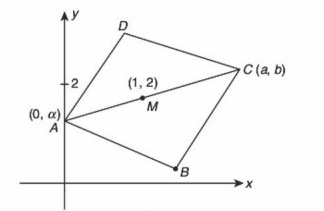Q. The sides of a rhombus $ABCD$ are parallel to the lines, $x - y + 2 = 0$ and $7x - y + 3 = 0$. If the diagonals of the rhombus intersect at $P(1, 2)$ and the vertex $A$ (different from the origin) is on the $y-$ axis, then the ordinate of $A$ is :
Solution:
